Soft, affectionate, and irresistibly charming, the Ragdoll cat has earned its name for the way it melts into your arms, going completely limp when cuddled or held. With striking blue eyes, a plush medium-length coat, and a gentle, playful personality, these cats can grow to impressive sizes—sometimes tipping the scales at 20 pounds.
Curious about what makes Ragdolls so special? Explore Nexus Pets’ Ragdoll Cat Guide to discover their unique traits, color variations, typical lifespan, and up-to-date prices before bringing one of these lovable companions home.
Introduction to the Ragdoll Breed
The Ragdoll is a captivating and gentle domestic cat breed, celebrated for its striking appearance and affectionate, easygoing temperament. One of the most recognizable features of Ragdolls is their vivid blue eyes, which complement their soft, semi-long, silky coat. They are considered a large, muscular breed, with males often reaching 12–20 pounds (5.4–9.1 kg) and females 8–15 pounds (3.6–6.8 kg).
Ragdolls are particularly renowned for their calm, placid nature, earning them nicknames like “puppy-cats” or “dog-like cats” due to their tendency to follow their owners, seek companionship, and respond positively to handling. Unlike many other breeds, they are rarely aggressive and adapt well to families, other pets, and indoor environments.
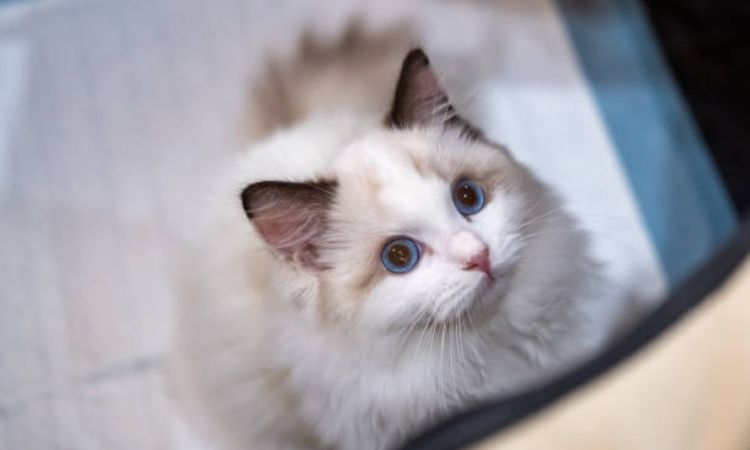
Their unique name comes from a notable behavioral trait observed in the original breeding stock: a tendency to go limp and relaxed when held. While not all modern Ragdolls exhibit complete “floppiness,” their overall docile and affectionate nature remains a hallmark of the breed.
With their striking colorpoint markings—where the body is lighter than the extremities—and patterns such as colorpoint, mitted, bicolor, lynx, and tortoiseshell, Ragdolls are visually stunning as well as wonderfully companionable. Their intelligence, gentle playfulness, and loyalty make them ideal pets for both families and individuals seeking a loving, low-stress feline friend.
Originating in the 1960s in Riverside, California, through the work of breeder Ann Baker, Ragdolls were developed from selected domestic longhairs like Josephine, Daddy Warbucks, and Blackie. These foundation cats were prized for their placid temperament and affectionate behavior, traits that continue to define the breed today. Recognized by major registries such as the Cat Fanciers’ Association (CFA), Ragdolls have grown in popularity worldwide, especially in the United States and the United Kingdom, and remain one of the most sought-after cat breeds for their beauty, temperament, and companionship.
Key Ragdoll Breed Traits
Physical Characteristics
- Size and Weight
Ragdolls are among the largest domestic cat breeds. Adult males generally weigh 12–20 pounds (5.4–9.1 kg), while females are slightly smaller at 8–15 pounds (3.6–6.8 kg). They have long, muscular bodies, broad chests, sturdy legs, and large, tufted paws. Ragdolls grow slowly and may take up to four years to reach full size, giving them a solid, gentle giant appearance.
- Coat and Grooming Needs
Their semi-long, silky coat is soft to the touch and lacks a dense undercoat, which helps reduce matting and shedding. Ragdolls require brushing at least twice a week, particularly during spring shedding. Coat colors include seal, chocolate, red, blue, lilac, and cream, with patterns such as colorpoint, bicolor, mitted, lynx point, and tortie point. Kittens are born white, developing their full colors and patterns over 2–3 years.
- Eye Color and Facial Features
Ragdolls have large, oval, deep blue eyes and broad heads with slightly rounded ears. Their pointed coloration—darker ears, face, legs, and tail compared to the body—creates a striking, gentle expression. Overall, their facial features complement their soft, flexible bodies for a distinct, endearing look.
The Famous Ragdoll Temperament
- The “Floppy” Trait
Ragdolls are best known for going completely limp when held, a behavior that gave the breed its name. This docility makes them easy to handle and extremely tolerant of cuddling, handling, and gentle interactions.
- “Puppy-like” Behavior and Intelligence
Often called “puppy cats”, Ragdolls display playful, trainable behavior. They can retrieve toys, solve puzzle feeders, and interact with humans in ways similar to dogs. Their playful nature often lasts into adulthood, but they maintain a calm, relaxed demeanor.
- Social Nature and Compatibility
Ragdolls are highly social and affectionate, often following their owners around and seeking attention. They generally get along well with children and other pets, including dogs, making them ideal for family homes. Their gentle and patient temperament ensures they adapt well to busy households while forming strong bonds with their human companions.
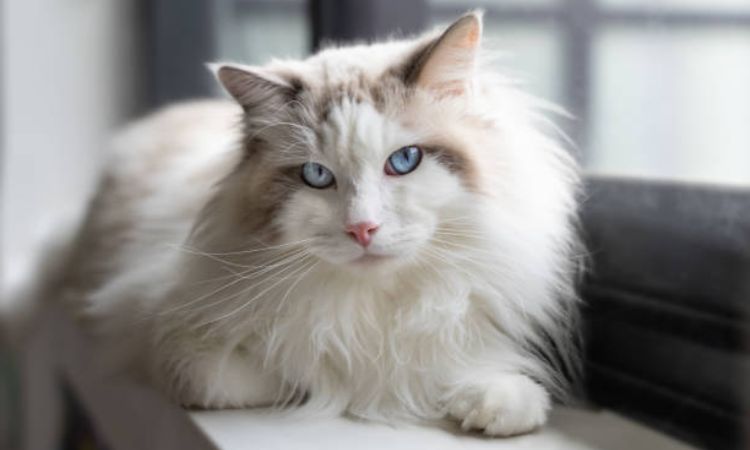
Ragdoll Cat Colors and Patterns
Ragdoll cats are celebrated for their stunning appearance, particularly their vivid blue eyes and silky, semi-long coat. Their fur comes in a variety of colors and patterns, influenced by the Himalayan gene, which creates the distinctive pointed markings on the cooler extremities—ears, face, tail, and legs—while keeping the body a lighter shade. Below is a comprehensive guide to the recognized colors and patterns of Ragdolls.
Standard Point Colors
Ragdoll “pointed” cats have darker coloration on their extremities contrasted with a lighter body. The main standard point colors are:
- Seal Point
- Body: Cream to fawn
- Points: Deep, rich brown on ears, face, legs, and tail
- Nose and paw pads: Seal brown
- Notes: This is the most traditional and classic Ragdoll color.
- Blue Point
- Body: Soft white to pale gray
- Points: Slate gray to bluish tones
- Nose and paw pads: Slate gray, sometimes with subtle pink edging
- Notes: Creates a cool-toned contrast with the pale body.
- Chocolate Point
- Body: Ivory or light cream
- Points: Warm milk chocolate
- Nose and paw pads: Cinnamon-pink with brown hints
- Notes: Gives a softer, warmer appearance compared to seal points.
- Lilac Point
- Body: Pure white
- Points: Light gray with pink undertones
- Nose and paw pads: Lavender to pink
- Notes: This delicate pastel shade is highly sought after by breeders.
Ragdoll Patterns
Ragdolls also display distinct coat patterns, which describe how white areas and colored points are distributed across the body:
- Bicolor
- Features: White blaze on the face (upside-down “V”), white chest, belly, legs, and sometimes back
- Points: Darker on ears, face, and tail
- Notes: The facial blaze is a hallmark feature; paws may vary in color.
- Mitted
- Features: White “mittens” on all paws, white chin, and belly stripe
- Points: Colorpoint pattern on face, ears, and tail
- Notes: Face markings can form symmetrical shapes like a diamond, star, or line.
- Van
- Features: Minimal color; primarily white with color restricted to ears, mask, and tail
- Notes: Rare and striking, with only small amounts of color allowed on the body.
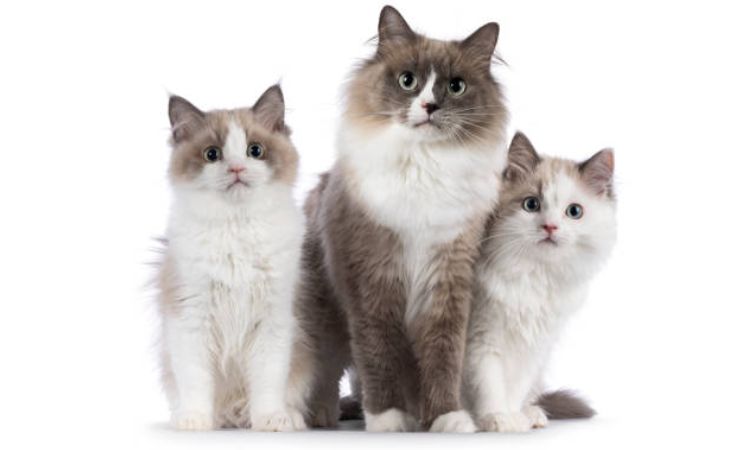
Other Recognized Variations
Beyond the standard points and classic patterns, breeders and enthusiasts also recognize several additional variations:
- Lynx (Tabby) Point
- Description: Tabby or striped markings overlay the points, adding visual texture
- Notes: Can appear over any standard color (seal, chocolate, blue, lilac, red, or cream)
- Tortie Point
- Description: Points are mottled with red or cream, giving a calico-like effect
- Notes: Often combined with lynx markings for extra complexity
- Solid and Mink Ragdolls (unofficial variations)
- Solid: Entire coat uniform in color with less contrast between body and points
- Mink: Slightly darker body than traditional points, softer contrast, and often softer, silky texture
- Notes: Not officially recognized by major cat associations, but popular among breeders
Ragdoll cats are remarkable for their variety of colors and patterns, combining beauty with their calm, affectionate temperament. From the classic seal or chocolate points to the intricate lynx and tortie overlays, every Ragdoll is unique.
Lifespan, Health, and Care
Ragdoll cats are renowned for their gentle temperament, striking blue eyes, and semi-longhaired coats. They are affectionate, social, and highly adaptable, making them ideal companions. Understanding their lifespan, health concerns, and proper care ensures they lead long, happy, and healthy lives.
1. Typical Ragdoll Lifespan
- Average Life Expectancy: Ragdolls typically live 13–17 years, with some individuals reaching over 20 years.
- Gender Differences:
- Female Ragdolls often live longer (14–16 years) due to lower risk of injuries and reproductive health issues.
- Male Ragdolls usually have a slightly shorter lifespan (12–14 years) and may be more prone to conflicts or certain health problems.
- Factors Influencing Lifespan:
- Genetics: Cats from long-lived bloodlines tend to have a higher lifespan.
- Lifestyle: Indoor cats live longer than outdoor cats due to reduced exposure to accidents, predators, and disease.
- Diet & Nutrition: High-quality, balanced nutrition contributes significantly to overall health and longevity.
- Preventive Healthcare: Regular vet checkups, vaccinations, and parasite control improve lifespan.
- Stress & Environment: Low-stress, safe, and stimulating environments support a healthier, longer life.
2. Common Health Concerns
While generally healthy, Ragdolls are predisposed to some breed-specific issues:
Hypertrophic Cardiomyopathy (HCM)
- A hereditary heart condition where the heart muscle thickens, reducing pumping efficiency.
- Symptoms may include lethargy, difficulty breathing, reduced appetite, and exercise intolerance.
- Prevention & Management: DNA testing in breeding programs has reduced incidence. If diagnosed, medications and a sodium-restricted diet may help manage the condition.
Polycystic Kidney Disease (PKD)
- A genetic disorder that can affect kidney function, though less common in Ragdolls than some other breeds.
- Regular monitoring of kidney health via blood tests and ultrasounds can help early detection.
Weight Management and Diet
- Ragdolls are large cats prone to obesity, which can strain joints and lead to arthritis.
- Feeding Guidelines:
- Provide a mix of wet and dry food to balance hydration, protein, and dental health.
- Measure food portions according to life stage (kitten, adult, senior).
- Monitor weight and body composition regularly.
- Allergies: Ragdolls may be sensitive to food or seasonal allergens, requiring careful selection of cat food and attention to coat and skin health.
3. Essential Care and Maintenance
Grooming a Semi-Longhaired Coat
- Ragdolls have medium-to-long coats in colors like seal, blue, chocolate, lilac, red, and cream, with patterns such as mitted, van, bicolor, and colorpoint.
- Combing: 1–2 times per week, more during shedding seasons, using a large and fine metal comb.
- Routine Grooming: Begin from kittenhood to ensure tolerance to nail trimming, bathing, and ear cleaning.
- Monitor coat and skin for signs of allergies or matting.
Nutrition and Feeding Guidelines
- Use AAFCO-approved cat food to meet all nutritional needs.
- Include wet food to maintain hydration; mix with dry food to support dental health.
- Monitor caloric intake and adjust portions as needed.
- Be cautious with treats, as overfeeding can contribute to weight gain.
4. Veterinary Care and Preventive Measures
- Regular Checkups: Biannual or annual visits for early detection of health issues.
- Vaccinations & Parasite Control: Protect against fleas, ticks, worms, and infectious diseases.
- Neutering/Spaying: Reduces risks of reproductive health problems and prevents unwanted behaviors.
- Eye & Ear Care: Check for redness, discharge, or infection, and consult a vet if necessary.
- Dental Care: Even with wet food, monitor teeth and gums; dental hygiene prevents plaque and tartar buildup.
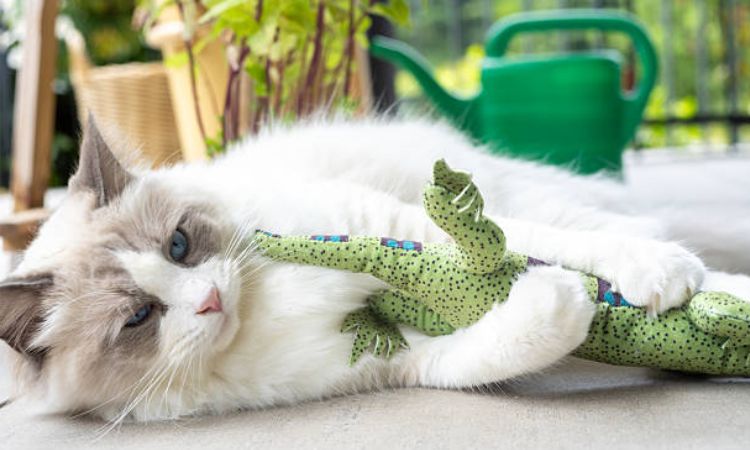
Real Ragdoll Cat Prices and Factors
1. The Cost of a Ragdoll Kitten
The price of a Ragdoll kitten depends on whether it is classified as pet-quality or show-quality:
- Pet-Quality Ragdolls: These kittens exhibit the breed’s signature temperament—affectionate, social, and laid-back—but may have minor variations in markings, eye color, or size.
- Typical Price Range: $2,500 – $4,000 USD
- Show-Quality Ragdolls: These kittens meet the official breed standards set by organizations such as TICA or CFA. They are carefully bred for perfect conformation, color, and pattern, making them ideal for shows or breeding programs.
- Typical Price Range: $3,800 – $5,000+ USD
Note: Prices often include value-added services like vaccinations, deworming, microchipping, spay/neuter surgery, and sometimes initial health insurance coverage for the first 30 days.
2. Average Price Range for a Purebred Ragdoll Kitten
Across reputable U.S. breeders in 2024, purebred Ragdolls typically cost:
| Breeder | Location | Price Range |
| Pearl’s Ragdolls | Texas | $2,400 – $3,000 |
| Ragalicious Ragdolls | California | $3,800 – $5,000 |
| Pastel Ragdolls | Arizona | $3,900 – $4,900 |
| Willowtree Ragdolls | Massachusetts | $3,500 – $6,000 |
| Cotton Blues Ragdolls | Ohio | $3,000+ |
| Leah’s Ragdolls | New York | $3,000+ |
| Masterpiece Ragdolls | Washington, DC | $2,500 – $5,000 |
Transportation within the U.S. may add $500–$1,000, depending on distance from the breeder.
3. What Influences the Price?
A. Breeder Reputation and Ethics
High-quality, ethical breeders invest in the health, socialization, and care of each kitten. They perform genetic testing for diseases like HCM, provide vaccinations, spaying/neutering, and microchipping, and may offer health guarantees.
- Lower-cost breeders may skip these services, which could result in long-term medical bills or behavioral issues.
B. Geographic Location
- The cost of a Ragdoll kitten varies by region due to local demand and breeder availability.
- Coastal states like California and New York often have higher prices due to higher demand and operating costs.
C. Lineage and Pedigree
- Kittens from champion bloodlines or superior lineage cost more, as they carry desirable traits for conformation, temperament, and breeding potential.
- Pedigree influences not only appearance but also genetic health, reducing the risk of inherited diseases.
D. Age and Availability
- Kittens purchased at peak demand or from rare color patterns (e.g., Blue Lynx Point, Seal Lynx Point) may cost more and require longer waiting times.
- Older kittens, retired breeders, or kittens available for adoption may be priced lower but still provide documented health records and spay/neuter status.
4. Additional Costs to Consider
Even after the initial purchase, Ragdolls require ongoing expenses for food, litter, vet care, grooming, and enrichment:
| Category | Monthly/Annual Estimate |
| Food | $150/month (~$1,800/year) |
| Litter | $50/month (~$600/year) |
| Veterinary Care | $400 – $1,200/year |
| Pet Insurance | $300 – $700/year |
| Grooming & Accessories | $200 – $600/year |
| Transportation (if needed) | $500 – $1,000 one-time |
Investing in reputable breeders and proper care upfront reduces long-term costs and ensures a healthier, happier cat.
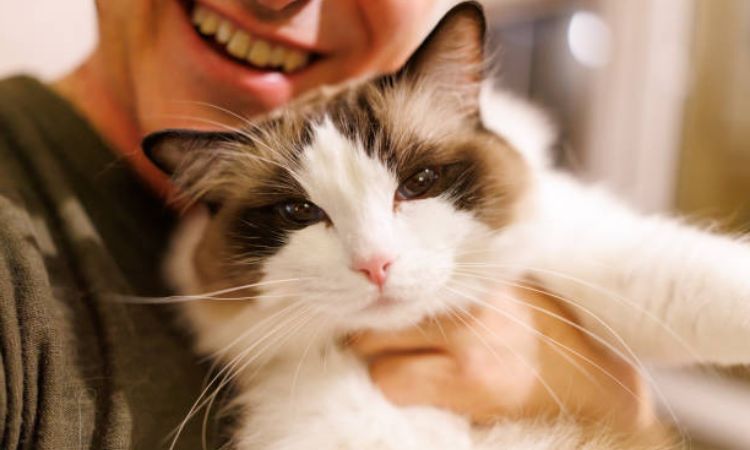
Before You Buy: Your Ragdoll Adoption Checklist
1. Finding a Reputable Breeder
Not all breeders operate ethically, so it’s crucial to distinguish between responsible breeders and backyard breeders or kitten mills.
Warning Signs of a Backyard Breeder or Kitten Mill:
- No health guarantees or vaccination records.
- Refusal to let you see the kitten’s parents or living conditions.
- Kittens are always available, or multiple litters are ready at all times.
- Prices that are unusually low compared to reputable breeders.
- Lack of registration with recognized cat associations like TICA or CFA.
Key Questions to Ask a Potential Breeder:
- Are the parents DNA-tested for hypertrophic cardiomyopathy (HCM) and other genetic conditions?
- Can I see health records and vaccination history for the kitten?
- How are the kittens socialized from birth?
- What kind of diet are the kittens fed?
- Do you provide spaying/neutering, microchipping, and initial health insurance?
- Can I visit the cattery and meet the parents?
What to Look for in a Kitten’s Environment:
- Clean, safe, and spacious living conditions.
- Positive socialization with humans and other pets.
- Access to toys, climbing spaces, and scratching posts.
- Healthy, well-groomed kittens with bright eyes, clean ears, and a shiny coat.
2. Adopting a Ragdoll
Ragdolls are widely available through reputable breeders, but rescue organizations and shelters can also be excellent options.
Ragdoll Rescue Organizations and Shelters:
- Many Ragdoll-specific rescues rehome kittens and adult cats that need loving homes.
- Adoption fees are typically lower than buying from breeders and often include vaccinations, spaying/neutering, and microchipping.
- Adult cats or retired breeders can be adopted at a lower cost, with a fully established temperament and sometimes with prior training or socialization.
The Benefits of Adopting an Older Cat:
- Known personality and behavior, reducing surprises.
- Often already litter-trained and socialized.
- Can be a more affordable and ethical alternative to purchasing a kitten.
- Older cats often crave human companionship and adapt quickly to a loving home.
3. Essential Supplies to Have Ready
Before bringing your Ragdoll home, ensure you have the basic essentials for comfort, nutrition, and health:
Food and Water Bowls:
- Stainless steel or ceramic bowls are ideal to prevent bacterial growth.
- Ensure fresh water is always available, possibly with a pet water fountain to encourage hydration.
Litter Box and Litter:
- Provide at least one litter box per cat, plus one extra if possible.
- Use clumping, unscented litter initially to reduce stress.
- Keep litter boxes in quiet, accessible locations, away from food and water.
Scratching Posts and Toys:
- Scratching posts or pads help maintain claws and prevent furniture damage.
- Toys for interactive playtime promote exercise and bonding.
- Puzzle feeders or treat-dispensing toys can provide mental stimulation.
Carrier and Grooming Tools:
- A sturdy carrier is essential for trips to the vet or safe transport.
- Grooming tools like metal combs and slicker brushes help maintain the Ragdoll’s semi-long coat.
- Nail clippers, a soft towel for bathing, and ear/eye cleaning supplies are recommended.
Bringing a Ragdoll into your home is a long-term commitment that combines love, care, and preparation. Understanding their unique traits, grooming needs, health considerations, and realistic costs ensures you’re ready to provide the best life for your new feline companion. By choosing a reputable breeder or adopting thoughtfully, you can welcome a healthy, affectionate Ragdoll who will be a cherished part of your family for years to come.






